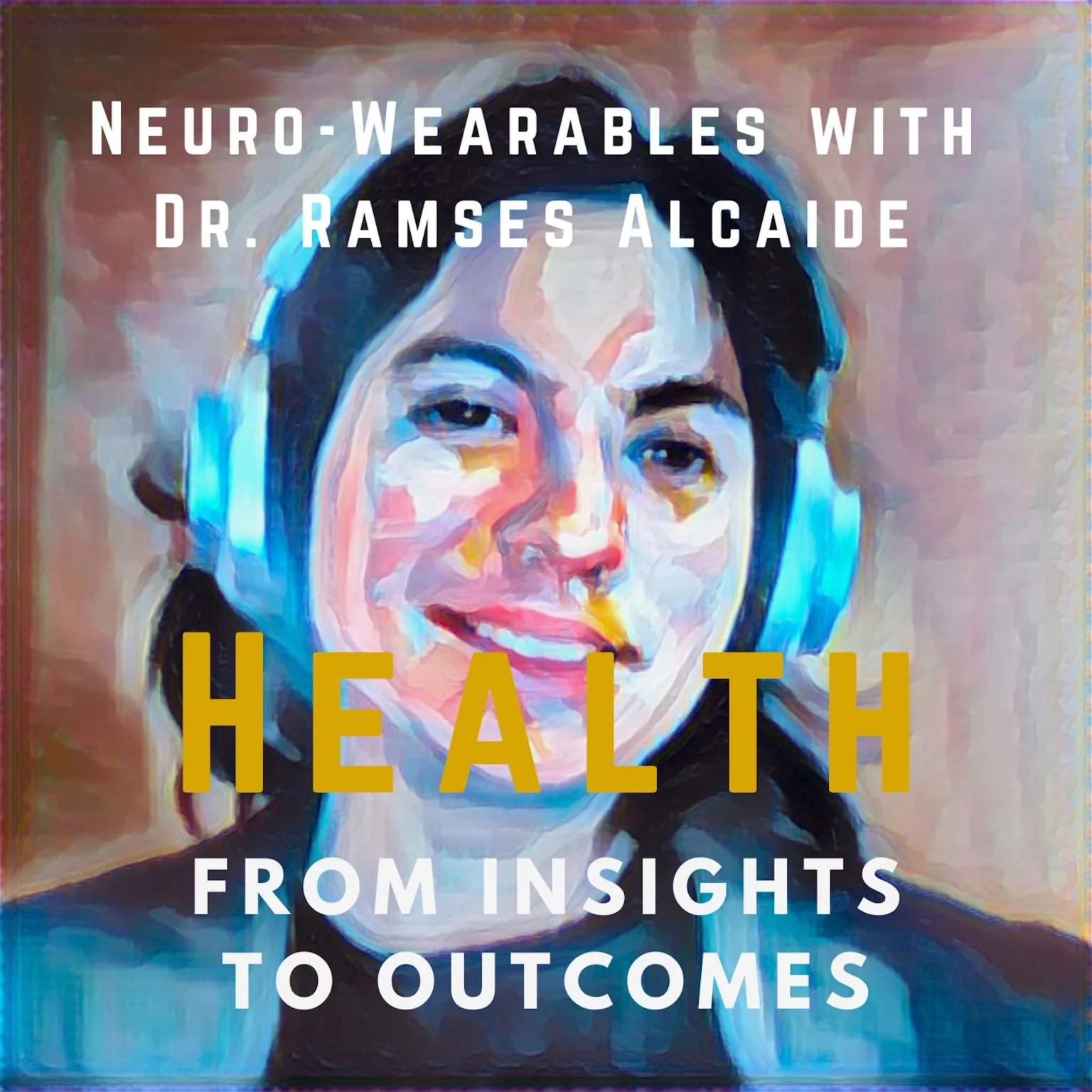Focus on Physicians:
Insights, Ideas, and Strategies
How to Find Your Creative Spark: A Guide for Physicians
As physicians, we learn to practice from an evidence-based standpoint, checking the data, keeping up with the literature, and following carefully researched guidelines. But as crucial to good patient care as this is, providing the best care requires the ability to go deeper, connecting a series of disparate dots, asking probing questions, and creating trust.
Having your own creative practice can stimulate this stronger connection by giving you tools and insights that come from a less rigid view of the world. And at the same time, creativity can be a refuge, offering an escape and a form of mindfulness that is often difficult to access in our precision-driven world.
An earlier version of this article appeared on this website in January, 2024
As physicians, we learn to practice from an evidence-based standpoint, checking the data, keeping up with the literature, and following carefully researched guidelines. But as crucial to good patient care as this is, providing the best care requires the ability to go deeper, connecting a series of disparate dots, asking probing questions, and creating trust.
Having your own creative practice can stimulate this stronger connection by giving you tools and insights that come from a less rigid view of the world. In fact, a British study found that people who engaged in creative activities at home were more likely to discover creative solutions to problems at work.
Creativity can also serve as a refuge, offering an escape and a form of mindfulness that is often difficult to access in our precision and productivity driven world. And sometimes it leads you farther than you ever imagined. For example, after retiring from clinical practice, I followed my passion for photography and the arts, eventually completing a BFA degree. I’m currently immersed in an MFA program, which has opened new doors for me that I never knew existed.
You don’t need to have special skills or innate talent to begin your creative practice. And you definitely don’t have to pursue higher education. It can be something that you do for yourself alone. But once you get started, you may find that your imagination awakens, opening your mind to new techniques and ideas that might never have occurred to you if not for this artistic exploration.
Here are some simple ways to inspire and nurture your inner artist:
Just Get Started
Getting started may sound simple, but overcoming inertia can be the hardest part. You don’t need a grand plan, a fancy camera, or a fully equipped studio. Just begin and set the wheels in motion. Your first step doesn’t have to be perfect; it just has to be taken. After that, the next steps often reveal themselves.
Embrace Imperfection
Check your perfectionism at the door. For people immersed in the creative arts, imperfection is not just accepted; it’s often celebrated. Express, explore, and learn. Give yourself the freedom to make mistakes and be messy. This is a crucial part of the creative journey, and it’s how new ideas are generated.
Inspiration Appears While You’re Working
Waiting for inspiration is like waiting for the perfect moment – it rarely comes when you're idle. To borrow a phrase from mindfulness meditation, creativity is about being in the now. As Picasso is famously quoted, “Inspiration exists, but it has to find you working.” The muse, that elusive spark of creativity, is not impressed by your aspirations. She finds you when you’re in the messy midst of creation.
Set Aside Time for Creativity
Schedule your creative time just like you would for any appointment. Whether it’s 30 minutes every evening or a few hours on Saturday afternoon, having a dedicated slot for creativity can open windows in your mind and give you room to explore. If time feels tight, commit to simply 10 minutes each week, and see where that takes you.
Explore Different Creative Avenues
Creativity means different things to different people. You might enjoy writing, while someone else might find solace in painting, dancing, or playing an instrument. Simply wandering around intentionally with your phone’s camera can be a form of creative play. If you have time, taking a weekend class in pottery or some other art form could be a fun place to start. If you’re not sure how to start, allow yourself to experiment with different forms of creative expression. You might be surprised by what resonates for you.
Join a Creative Community
There's something magical about being part of a community that shares your passion. Look for local art classes, writing groups, photography clubs, or online forums. Share your work, get feedback, and enjoy the collective creative energy. A community can offer support, inspiration, and a sense of belonging. And unlike your practice as a physician, no one will expect you to be perfect or have all the answers.
Pause, Reflect and Adjust
Every now and then, take a step back and reflect on your creative journey. Stay curious. What have you learned? What do you enjoy the most? Where has your creativity taken you? You might choose to keep a creative journal to celebrate your milestones, explore the unexpected detours, and maybe even recalibrate your goals.
Final Thoughts
Integrating creativity into your life isn’t just about producing something; it’s about the process, the joy, and the journey of self-discovery it brings. It can be a form of meditative practice, and an escape hatch from the rigidity of a schedule and a task list.
As a physician, you have a unique perspective of the world, shaped by your experiences and the people whose lives you’ve touched. Infusing this perspective into your creative endeavors can lead to something unexpected, tangible, and uniquely yours. By exploring your creativity without self-judgment, you may find that the insights you discover enrich and deepen your relationships with others, including your loved ones, patients, and colleagues.
If you’ve enjoyed this article and would like to stay in the loop for more insights on creating a sustainable, fulfilling, and happy life as a physician, sign up for my newsletter or reach out on my website. I’d love to hear from you.
And if you’d like to schedule a complimentary introductory meeting with me, click the link below.
Using the Language of Art to Create Work-Life Balance
Most physicians cite work-life balance as a top priority. Yet there is little clarity on what exactly work-life balance means.
You might be surprised to learn that art theory holds the answer.
In this article we’ll explore ideas of symmetric, asymmetric, radial, and crystallographic balance. And you’ll discover why asymmetric balance might hold clues for your own unique form of work-life balance.
An earlier version of this article was published on KevinMD.com in 2023
For most physicians, achieving work-life balance is a top priority. But what does balance mean? And is it even possible?
In this article, I propose that there is more than one way to conceptualize balance. Before we explore these new perspectives, it’s important to address a common alternative: the concept of work-life integration.
Because the concept of balance often feels unattainable, and perhaps even undesirable, some argue that “work-life integration” is the better term. This popular terminology implies that somehow work and personal life should seamlessly intertwine, one gently flowing into the other.
It’s a trendy buzzword in managerial circles, but for physicians, work-life integration is often not a choice—it’s a given. And between taking call, attending after hours committee meetings, slogging through the EHR, and making time for CME and recertification, what’s labeled as “personal time” often gets consumed by work-related demands.
That’s why the work-life integration construct for physicians often means no real boundaries at all.
In this model, work doesn’t just blend into your personal life—it takes over. And yet, the reverse is rarely possible. There may be no space in the work day for your own needs.
Let’s be honest: it’s rare that you can realistically bring family or personal responsibilities into the hospital or clinic. For most physicians, that’s neither practical nor desirable.
So where does that leave us? I believe that work-life balance—not integration—is still the better goal. But the way we think about balance is often flawed.
When we picture balance, most people imagine a seesaw or a perfectly balanced scale, where equal weight on both sides creates harmony. It’s a tidy image but one that’s unrealistic for most lives, especially for physicians.
Instead, there’s a deeper, more creative way to think about balance—one that borrows from the language of art. By embracing this alternative perspective, you will discover a dynamic and fulfilling concept of balance that can help you to create a more sustainable and happy life.
Before we go any further, it’s valuable to think about work-life balance as more than simply “work” and “life”. Work is an important part of life, and perhaps even a defining feature of the life you’ve chosen. But “life” isn’t just what’s left over after work. It can be useful to think about life as a array of different elements. Broadly speaking, these may include
Family
Friends
Leisure
Self-Care
Anything else that’s meaningful to you
Equalizing all of these factors our using traditional concepts of balance is virtually impossible.
But if we borrow the concept of balance from art theory, it all starts to make more sense.
Concepts of Balance
In art, balance can be
Symmetric
Asymmetric
Radial
Crystallographic (Mosaic)
Let’s take a little detour into art theory so I can show you what this means.
Symmetric
Think of the typical balanced scale, or a mirrored pair.
This is the traditional way that we think of balance.
Asymmetric
The perception of weight across the composition may be balanced, but each element has a different size or mass.
This form of balance tends to create more interesting and dynamic images.
Radial balance
This type of balance uses a central focal point
Rays, spirals, or ripples radiate outward
Fragment, Peru c. 1000-1476 AD, Kate S. Buckingham Endowment, Art Institute of Chicago
Crystallographic (Mosaic) balance
A large number of elements share equal weight
There is no single focal point
Choosing Asymmetry
Any of these constructs may work for you. For many physicians, an asymmetric concept of balance can be especially useful. Think about the way you might create a rock garden. With asymmetric balance, you have wide latitude to play with different scale and elements. There is no exact formula, but you feel it when it’s right.
Compared to the symmetric form of balance, where both sides hold equal weight, asymmetric balance falls apart when the elements are too similar.
In asymmetric balance there is usually a dominant element, with the other components playing a supportive or bridging role. Often two smaller elements work harmoniously to balance a larger one. In an asymmetric painting like Van Gogh’s Starry Night, there may be some tension, but the image still feels complete.
Asymmetric balance can be interesting to play with. Moving one element often means that the others must also be moved in order to maintain a sense of harmony. This new configuration might strike a different, even unexpected, chord and create different relationships between the pieces.
When thinking about creating your own work-life balance, asymmetric balance may be a good starting point to consider. As your priorities shift over time, your vision of balance may also change. At any time, you can rearrange the elements to make them work for you.
How do you begin to define your own work-life balance? Take another cue from the art world. Sit down with pen and paper and sketch it out in words or pictures. This form of reflection is a great way to get clarity on your own ideas so you can create your vision for the future.
If you’ve enjoyed this article and would like to stay in the loop for more insights on creating a sustainable, fulfilling, and happy life as a physician, sign up for my newsletter or reach out on my website. I’d love to hear from you.
And if you’d like to schedule a complimentary coaching discovery session, click the button below.
Connecting With Your Inner Wisdom: A Journaling Guide for Physicians
If you’re a physician, journaling is a wonderful way to access your own thoughts and values, getting in touch with what matters most to you. It’s a form of mindfulness that doesn’t require any skills or knowledge. All you need is a pen and paper and as few as five minutes.
This article is the first in a three-part series. In each one, I’ll share a different collection of journaling prompts designed to help you to connect your own dots and rediscover what truly matters to you. Whether you’re exploring a new professional path, planning for retirement, or seeking greater happiness and satisfaction in your life, these prompts will guide you towards clarity and self-awareness.
With countless demands on your time and attention, it’s easy to lose touch with yourself as you slingshot from one task to the next. This can get you through the day, but after a few months, years, or maybe even decades of living this way, it can be difficult to find your way back to your true self.
I know this, because I experienced this sense of disconnection firsthand. From starting medical school in 1984, through decades of practice, I felt as if I was on a treadmill. I was constantly striving for the next level, whatever that was, and rarely taking a chance to pause or to celebrate. I stayed active, had hobbies and friends, but it all felt pretty frantic. As I began to contemplate my life after cardiology, I wasn’t exactly sure who the “real” me was, or what she wanted next. That’s when I began journaling as a regular practice.
As a full time cardiologist with a busy practice, my days and evenings were highly regimented, with little room to add on yet another task. I was getting nowhere with perseverating over what was making me discontent, and I knew that I needed a way to sort things out.
Journaling was something that I played with over the years, but the habit had never stuck. To be honest, the empty pages always felt a little daunting. So this time, I made a commitment to myself to spend just 10 minutes a day sitting with my thoughts.
The Power of Journaling: A Path Back to Your True Self
Every evening I would pose questions to myself, trying to unravel the knots that I had tied over the years, until I rediscovered the threads that could lead me to my next steps. And remarkably, the process worked! Through introspection and time, I developed a set of goals and a sequence of tiny little steps that got me farther than I ever could have imagined.
This article is the first in a three-part series. In each one, I’ll share a different collection of journaling prompts designed to help you to connect your own dots and rediscover what truly matters to you. Whether you’re exploring a new professional path, planning for retirement, or seeking greater happiness and satisfaction in your life, these prompts will guide you towards clarity and self-awareness.
Getting Started with Journaling
Journaling is a wonderful way to access your own thoughts and values, getting in touch with what matters most to you. It’s a form of mindfulness that doesn’t require any skills or knowledge. All you need is a pen and paper and as few as five minutes.
Why do I say pen and paper, and not a keyboard? Because research has convincingly shown that writing by hand is far more activating for the brain than typing. Newer devices that save and transcribe handwriting, like the reMarkable, may help to bridge the gap between analogue and tech. If writing doesn’t come easily, you could also experiment with dictation. Most important is that you find something that works for you and feels comfortable and natural.
Journaling to Uncover Your Next Steps
This series of prompts will help you to reflect on your values and your sense of purpose, realigning the trajectory your life into something that feels resonant and clear.
For a kick start, if you haven’t already completed the Values Workbook, this is a great time to begin that exercise. You can get your free copy through my website.
Don’t feel as if you need to take on every prompt. There’s a lot to ponder here! Perhaps choose one or two for the week and see where it takes you.
Exploring Your Values
What do I value most about my role as a physician? Are these values reflected in my daily work and life? If not, what changes would need to happen in order for my values to be aligned with my work?
If I could describe the legacy I want to leave in one sentence, what would it be? How do I want people to remember me?
When have I felt most fulfilled in my career? What about those moments made them meaningful?
Clarifying Your Purpose
Why did I choose to become a physician? Does that "why" still resonate with me today? If it has changed, does it still feel true? And if not, what is missing?
What parts of my work energize me the most? How can I focus more on these aspects?
How does my work align with my personal definition of success? Where am I now in relation to that definition?
Evaluating Your Current Path
If my current career trajectory continued for the next 10 years, would I feel proud and content with my life?
What sacrifices am I making to sustain my current career path, and are they worth it?
Are there aspects of my personal life or passions that I’ve neglected? How can I reintegrate them?
Imagining the Future
If I could design my ideal work-life balance, what would it look like? What small steps could I take to get closer to that vision? What could I do today that would start to change things?
Imagine a day in your dream life. What are you doing, who are you with, and how do you feel?
What skills or interests do I have that I’m not currently using in my career? How might I incorporate them? And what skills do I wish I had? Are they important enough that I want to explore how to acquire them?
Confronting Barriers
What fears or doubts are holding me back from making a change I know I need? Are these fears grounded in reality? If so, is there something within my power to change?
Who or what am I afraid of disappointing if I follow my heart? How might I address that fear?
What is the worst that could happen if I pursued a career change or took on a new role? What strategies could I take to mitigate that? Are there other opportunities that outcome might open up for me?
Building Resilience and Courage
When have I faced significant challenges and grown from them? What strengths did I discover?
What does courage look like for me right now? How can I embody it in my decisions?
Who in my life inspires me to live authentically? What lessons can I learn from them?
Finding Alignment
Are there moments in my work when I feel disconnected from my authentic self? How can I realign?
How do I want to feel at the end of each day? What changes would help me experience that feeling more often?
What small, actionable steps can I take this week to bring more meaning into my work and life?
Cultivating Gratitude and Joy
What aspects of my career am I most grateful for? How can I focus more on these positives?
When was the last time I felt joy in my personal or professional life? What contributed to that moment?
What can I do today to make space for more joy and connection in my life?
In the next article in this series, I’ll share prompts to guide your exploration of personal projects, family connections, and meaningful relationships. The final article of the series explores journaling to envision your future.
If these prompts have been useful, or if you have some of your own that you’d like to share, drop me a line! I’d love to hear from you.
This post contains Amazon affiliate links. I may earn a small commission when you click on the links, at no additional cost to you. These commissions help to support the website.
If you’ve enjoyed this article and would like to stay in the loop for more insights on creating a sustainable, fulfilling, and happy life as a physician, sign up for my newsletter or reach out on my website. I’d love to hear from you.
And if you’d like to schedule a complimentary coaching discovery session, click the button below.









































